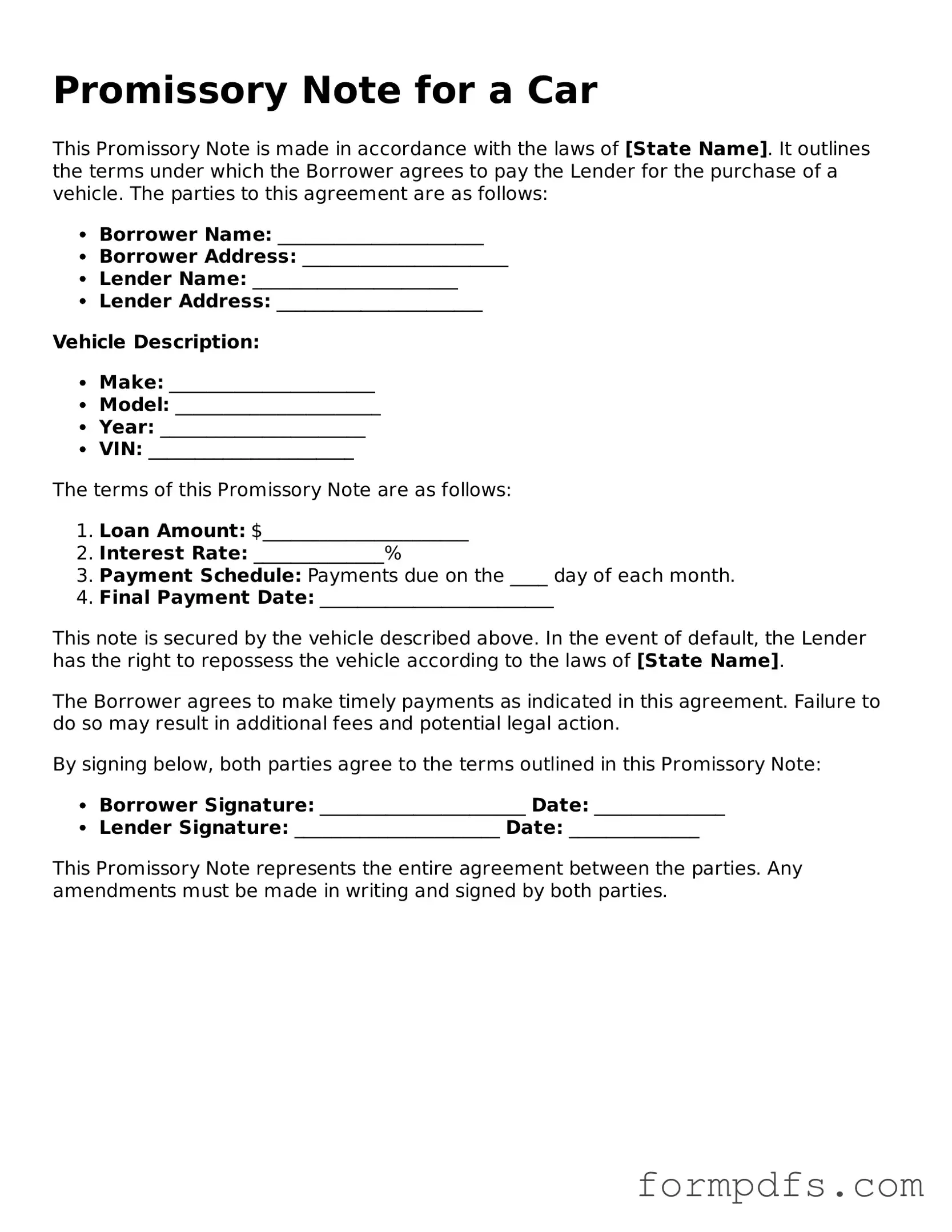What is a Promissory Note for a Car?
A Promissory Note for a Car is a legal document that outlines the terms of a loan used to purchase a vehicle. It serves as a written promise from the borrower to repay the lender a specified amount of money, usually with interest, over a predetermined period. This document protects both parties by clearly stating the obligations involved in the transaction.
Who typically uses a Promissory Note for a Car?
This document is commonly used by individuals who are borrowing money to buy a car, whether from a bank, credit union, or private seller. It can also be utilized by sellers who wish to finance the sale of their vehicle, allowing the buyer to make payments over time instead of paying the full amount upfront.
What information is included in a Promissory Note for a Car?
The note typically includes the names and addresses of both the borrower and lender, the principal amount of the loan, the interest rate, the repayment schedule, and any late fees or penalties for missed payments. Additionally, it may specify the vehicle's details, such as make, model, and VIN (Vehicle Identification Number).
Is a Promissory Note legally binding?
Yes, a Promissory Note is a legally binding contract. Once both parties sign the document, they are obligated to adhere to the terms outlined within it. If either party fails to comply, the other party may seek legal remedies, which could include pursuing the debt in court.
Do I need a lawyer to create a Promissory Note for a Car?
While it is not legally required to have a lawyer draft a Promissory Note, consulting with one can ensure that the document meets all legal requirements and adequately protects your interests. Many templates are available online, but it is important to customize the note to fit the specific terms of your agreement.
Can a Promissory Note be modified after it is signed?
Yes, a Promissory Note can be modified, but both parties must agree to the changes. It is advisable to document any modifications in writing and have both parties sign the revised note to avoid confusion or disputes in the future.
What happens if I miss a payment on my Promissory Note?
If a payment is missed, the lender may impose late fees as specified in the note. Continuous failure to make payments could lead to default, allowing the lender to take legal action to recover the owed amount. It's crucial to communicate with the lender if financial difficulties arise.
Can I use a Promissory Note for a car purchased from a private seller?
Yes, a Promissory Note can be used for a car purchased from a private seller. In this case, the seller acts as the lender, and the note outlines the terms of repayment. Both parties should ensure they understand the terms before signing.
What is the difference between a Promissory Note and a loan agreement?
A Promissory Note is a simpler document that focuses on the borrower's promise to repay a loan, while a loan agreement is more comprehensive and may include additional terms, conditions, and protections for both parties. A loan agreement often covers aspects such as collateral, warranties, and specific legal remedies in case of default.
Is a Promissory Note for a Car the same as a title loan?
No, a Promissory Note for a Car is not the same as a title loan. A title loan typically involves borrowing against the equity of a vehicle, where the lender holds the title as collateral. In contrast, a Promissory Note is simply a promise to repay a loan and may not involve the transfer of title or ownership rights.
